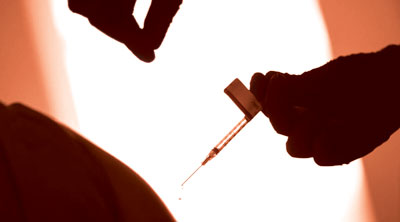By Marsha Mullings, MPH
Immunity: The Body’s Warriors
Our immune system functions as the body’s elite fighting force. It is an army consisting of a sophisticated array of offensive and defensive fighters, with a complex assortment of armament that it uses to defend us against microbes. When microbes invade our bodies, they quickly multiply within our cells. The immune system responds by sending out its frontline soldiers – the macrophages.
Macrophages are the cells that gobble up and destroy microbes. Whenever they attack a microbe however, they leave a critical piece of the microbe – the antigen – which they carry on their surface like an enemy flag. These “enemy flags” serve as a warning to the immune system that invaders are within the body. These antigen-displaying macrophages migrate to the lymph nodes and stimulate the production of T-cells and B-cells.
T-cells are the section of our immune army responsible for the cell-mediated response, the part of the immune system responsible for destroying our infected and dying cells. Killer T-cells (cytotoxic T-cells) produce chemicals that kill cells that have been invaded by the microbe. Other T-cells (helper T-cells) stimulate the production of B-cells, another powerful force in our immune army.
B-cells are the antibody producing workhorses of our immune army. Antibodies are proteins that destroy foreign invaders of our bodies. The B-cells stimulate our bone marrow to produce millions of antibodies that cover and destroy invading microbes. Our immune system then “remembers” the microbe and makes millions of additional antibodies against it. In the event of a future attack with that microbe, our immune system can quickly overwhelm an invader. This is the humoral response of the immune system. The humoral response is the part of our immune response that vaccines are designed to mimic.
Vaccines in the Body
The COVID-19 vaccines that are administered into our bodies will mimic the body’s natural immune response. Our immune system will “see” the fake microbe that the vaccine has introduced into our bodies and will respond in the same manner as it does when a natural microbe invades our bodies. The vaccine’s decoy microbe will stimulate macrophages which will in turn stimulate T-cells and B-cells. Our B-cells will produce millions of antibodies that are specific to the microbe that the vaccine is targeting. Our bodies will store millions of these antibodies in anticipation of an attack with the target microbe. This is the way in which the vaccine helps the body to develop a memory of the microbe and primes our immune system to respond immediately in the event of an infection with the target microbe. The immune system can quickly mount a response which will overwhelm the microbe and prevents us from becoming ill. Depending on the vaccine type, it may also store in its memory, the specifics of the microbe, for the entirety of our lives. In this case, we may never develop an illness to that microbe.
“Standard” Vaccines vs. mRNA Vaccines
The advent of this pandemic has spurred research and development of vaccines at an epic scale. Consequently, many vaccine candidates are in research and testing and a few have already been granted emergency use authorization here in the US. Given the enormity of the crisis and the need to vaccinate as many as possible, it is unlikely that most will have a choice as to the vaccine they receive. Nonetheless, it is important to know the basic differences between the vaccine types to help us in our decisions when it becomes feasible to make a choice in the vaccine we receive.
Standard vaccines use a live, weakened version, or an inactivated (killed) version of the target microbe as the main ingredient in the vaccine. At this stage, no COVID-19 vaccine is using a live form or a killed version of the coronavirus as an ingredient in the vaccine.
MRNA vaccines use the coronavirus’s genetic material (mRNA) as the main ingredient in the COVID-19 vaccines. Once inside the body, the mRNA will then proceed to instruct our cells to create the coronavirus’s spike protein. Our bodies will recognize this fragment of the coronavirus as an invader and develop antibodies to it. The coronavirus spike protein fragment, without the full viral structure, is harmless and will cause no illness. Our immune system will make antibodies and store them in memory. A subsequent infection with coronavirus will cause an immediate immune response that will quickly shut down the virus and prevent a progression to illness.

